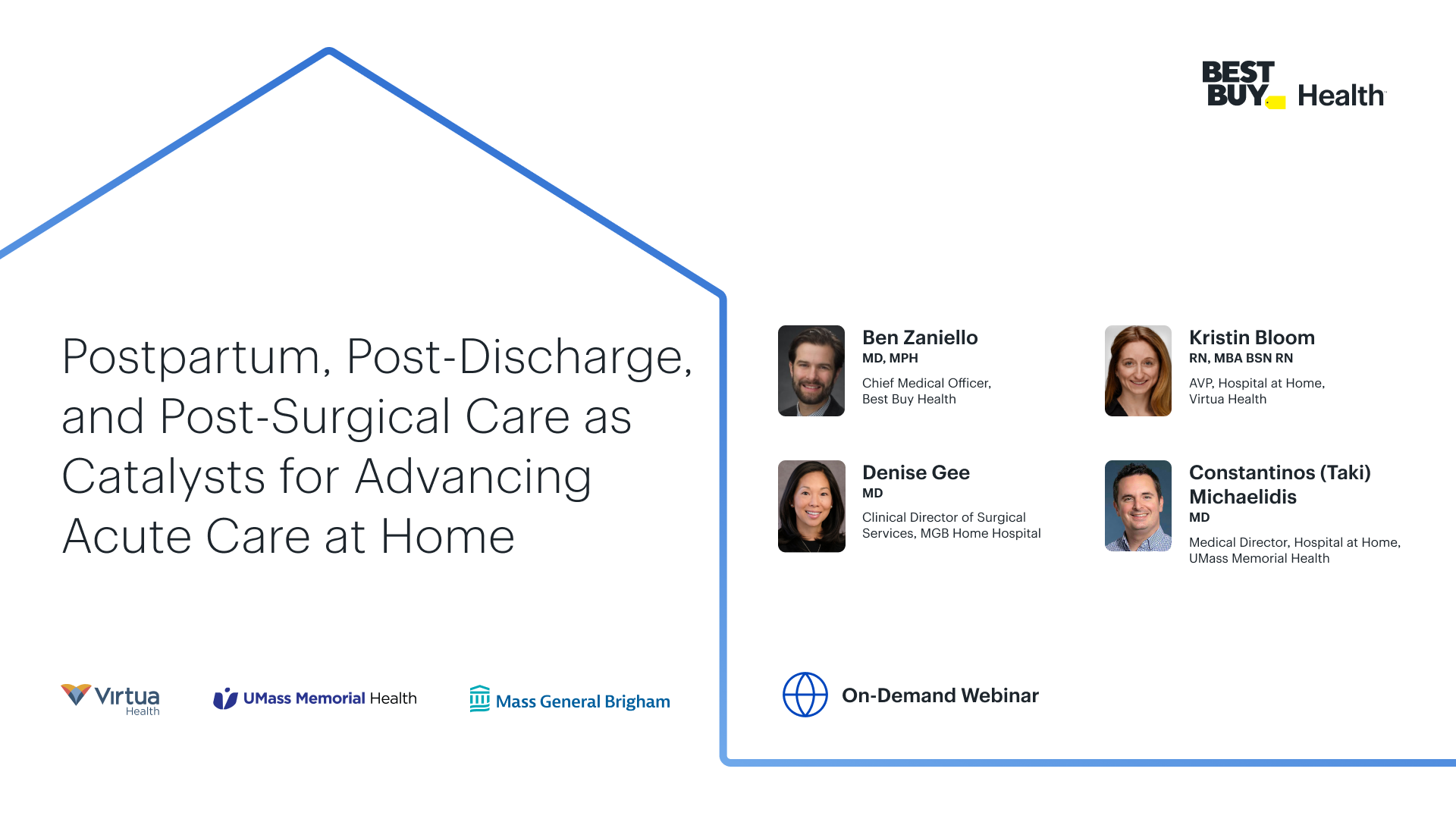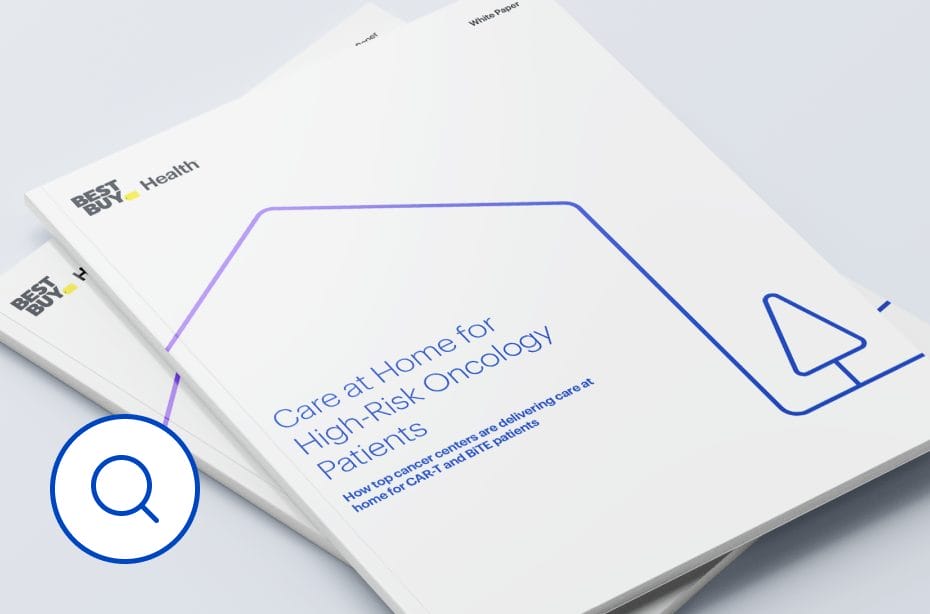How to prioritize health equity in your care-at-home program
Equity should be at the core of every care-at-home program, from chronic condition management, to Hospital at Home. In most conversations about building new programs, leaders are mindful of the risks of not prioritizing equity within their program, but it can be hard to know where to start.
So let’s begin with some definitions.
What is health equity?
CMS defines health equity “as the attainment of the highest level of health for all people, where everyone has a fair and just opportunity to attain their optimal health regardless of race, ethnicity, disability, sexual orientation, gender identity, socioeconomic status, geography, preferred language, and other factors that affect access to care and health outcomes.”
There’s a difference between equality (giving everyone the same thing) and equity (meeting people’s unique needs).
Why does health equity matter?
Health equity isn’t about equal access for all. It’s about providing a boost for traditionally overlooked communities such as people of color, women, the LGBTQIA+ community, and rural and aging populations.
By default, the healthcare system often pursues easy-to-reach populations, missing people traditionally not well served by HMO insurance models.
What are health disparities?
The CDC identifies health disparities as “preventable differences in the burden of disease, injury, violence, or opportunities to achieve optimal health that are experienced by socially disadvantaged populations.”
Health disparities are often the result of interacting factors related to:
- Socioeconomic Status
- Household Composition & Disability
- Minority Status & Language
- Housing Type & Transportation
Mounting evidence suggests that when innovations such as digital technologies increase the complexity of healthcare processes, they are more likely to widen existing health disparities.
Too many people are still left out of digital infrastructure
We have a crisis of access to care and tech in the US.
Access to high-speed internet is a social determinant of health (SDOH)—the economic and social conditions that influence individual and group differences in health status. The disparity of access to high-speed internet came into sharp focus during the pandemic, leading to the Affordable Connectivity program, which aims to bring low-cost access to high-speed internet for up to 38 million Americans.
Around 15% of Americans live in rural areas. The hospital closures of recent years have led to rural populations having sparse access to primary care physicians, and even more limited access to specialists.
Rural patients often don’t receive preventive care and experience major hurdles to broadband connectivity and transportation. And as a result, Americans living in rural areas have a 23% higher mortality rate than those living in more developed regions.
But internet connectivity gaps aren’t only a rural problem. Many low-income households in suburban or urban areas still lack home internet, making connectivity challenges a hurdle for care-at-home programs regardless of location.
How does Health First tackle equity challenges? Find out in the on-demand webinar.
A commitment to health equity
How do you deliver care at home in underserved areas?
Recently, the team at Current Health completed 100 home visits with one of our customers. Usually, the people living in these homes face several social determinants of health (SDOH). We learned that pursuing equity within a care-at-home program is not a milestone on a project plan to simply check off. It requires ongoing attention, consideration and humility at every stage of the program.
Go into each stage of setting up your care-at-home program with an equity mindset for involvement with patients and populations. This should be part of your strategic vision and goals.
8 strategies for prioritizing equity within a care-at-home program
- Recruit for inclusion and incorporate training to help your team combat implicit bias.
- Include provider engagement from the beginning.
- Thinking about patient eligibility and identification (inclusion and exclusion criteria) through the lens of health equity.
- Ensure language access (both spoken and written) within your program and digital tools.
- Think about patient enrollment, education and activation, considering that patients may feel some fear or uncertainty when strangers come into their homes.
- Offer a smart device and plug-and-play connectivity to those who need it.
- Engage proactively with local communities.
- Coordinate patient discharge, case management, and community services.
[When it comes to care at home], we’re getting back to the basics. We’re doing the human connection. Unfortunately, our healthcare system is so inundated with so many people who need us that it’s absolutely impossible to meet those needs within those brick and mortars all the time. With the Hospital at Home team, we can come into their most intimate and safest place. We have a lot more frank conversations with these patients than I ever imagined in my entire career.
Melissa Lutz, Nurse Manager, Hospital at Home, Health First
Bringing tech to those who need it
There are challenges with broadband and connectivity everywhere in the United States. But you can help bridge the gap with technology that can work with cellular networks or in-home internet. The Current Health Home Hub relies on cellular networks to serve as a connectivity bridge for many care-at-home programs.
When determining whether a patient with limited cellular connectivity meets inclusion criteria, consider factors like patient acuity and emergency response time. A patient living in a remote location may not be suitable for a Hospital at Home program, but could still receive support from a chronic condition management program.
As you build your program, consider that your patients may live in places you haven’t thought about delivering care in before, including non-traditional living arrangements or semi-permanent housing. Talk with your team about navigating these environments, and work consciously to build risk tolerance and provide care at home to all who can benefit from it.
Engaging Target Patient Populations
To pursue equity within your care-at-home program, it’s vital to engage your target populations. Here are a few suggestions:
- Work with your internal health equity team before and after your program is live.
- Check that members of the patient communities are represented on your team.
- Review the demographic metrics and review the details for excluded patients.
- Talk and (more importantly) listen to the communities you’re trying to reach.
As part of your quality program, evaluate your metrics, outcomes, and the people you are serving. If you’re looking at your program after a month or a quarter, and the populations you’re serving don’t match the demographics in your area, then your program has room for improvement.
Conclusion
Health equity means that everyone has what they need to live their healthiest lives, and is fundamentally about improved health outcomes. Access to care is just the beginning—we also need to ensure people have the knowledge and support to engage in their health.
Care-at-home programs need to be designed thoughtfully to be accessible and usable by all members of a community. And then we need to ensure that we don’t just measure things like activation and adherence, but go all the way through to health outcomes.
We still have a long way to go to achieve health equity, but the ongoing advancement of care at home is making a meaningful difference in health outcomes across communities.


